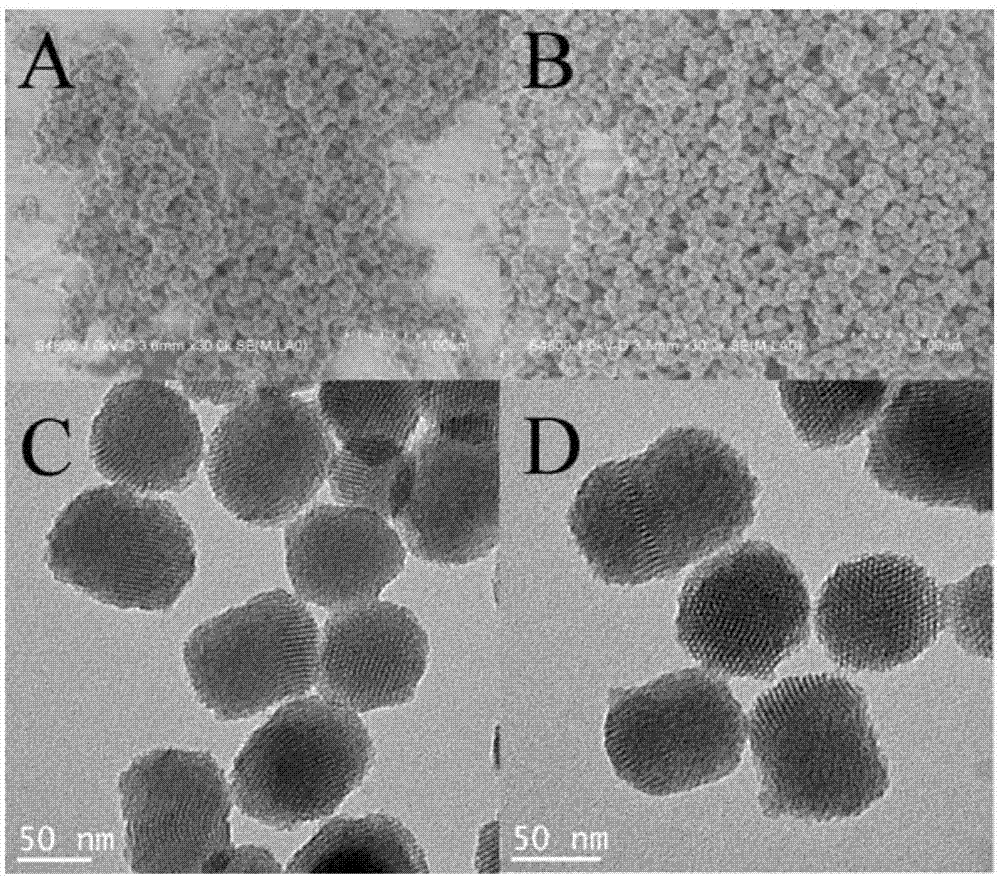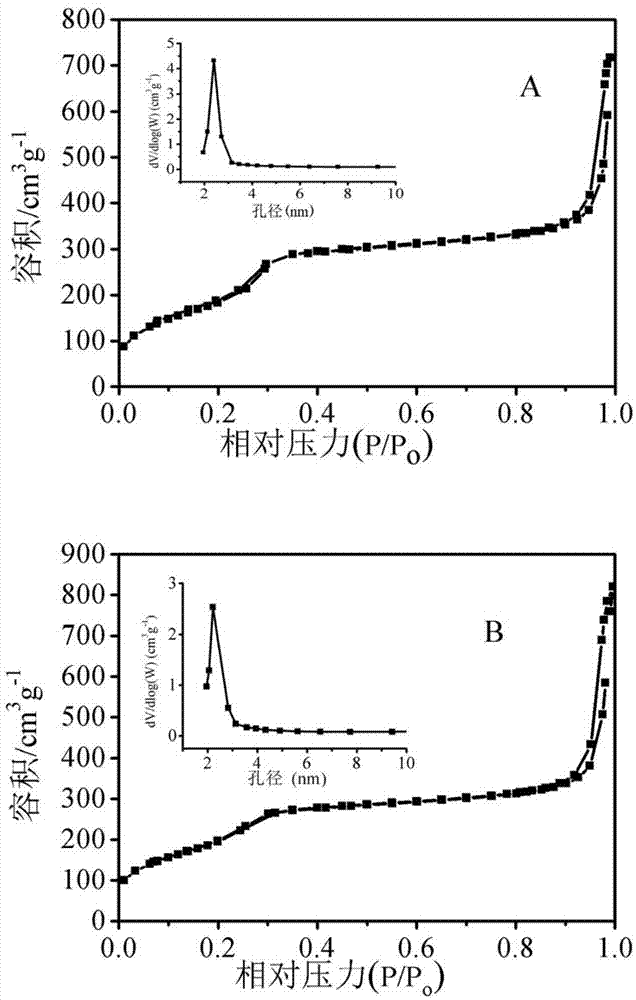Pmo fluorescent nanoparticles for mercury ion ratio detection and preparation method thereof
A fluorescent nanometer and mercury ion technology, applied in the direction of fluorescence/phosphorescence, chemical instruments and methods, luminescent materials, etc., can solve problems such as complex preparation processes, and achieve the effects of easy repeatability, good biocompatibility, and mild reaction conditions
- Summary
- Abstract
- Description
- Claims
- Application Information
AI Technical Summary
Problems solved by technology
Method used
Image
Examples
Embodiment 1
[0051] (1) Dissolve 9,10-dichloromethylanthracene (0.548g, 2mmol) in anhydrous acetonitrile (40mL) solution, then add anhydrous K 2 CO 3 (1.09g, 8mmol) and APTS (0.96mL, 4mmol), the mixed solution was refluxed under nitrogen protection for 48 hours. After the reaction was finished, the solution was cooled to room temperature, the organic solvent was removed, and the residue was purified by column chromatography (silica gel column, eluent was CH 2 Cl 2 ) to obtain a light yellow transparent oily liquid (0.20 g, yield 15%).
[0052]
[0053] (2) The preparation of PMO nanoparticles is through an improved Law. First, take cetyltrimethylammonium bromide (CTAB, 0.2g, 5.5×10 -4 mol) and NaOH (0.7mL, 2M) in a flask, add double distilled water (DDW) 100mL. The mixture was stirred for 15 minutes, then heated to 70°C, followed by the addition of 1.0 mL (0.94 g, 4.5 mmol) tetraethylorthosilicate (TEOS), 140 mg (0.225 mmol) disilylated anthracene and 0.1 mL (0.427 mmol) APTS. ...
Embodiment 2
[0061] Using the prepared material to detect mercury ions, different Hg 2+ The fluorescence spectra of PMO nanoparticles under concentration conditions are as follows: Figure 4 shown. (From bottom to fixed point, Hg 2+ The concentration is (1×10 -8 M~1×10 -4 M), as can be seen from this figure, when adding different amounts of mercury ions in the R6G / Anth-PMO (50mg / L) Hepes damping fluid of 7.0 when adding different amounts of mercury ions, the fluorescence emission intensity at 550nm is gradually enhanced, Figure 4 It shows that the PMO nanoparticle detector has a good detection performance for mercury ions.
[0062] Figure 5 is the ion selectivity of the PMO nanoparticle detector. It can be seen from the figure that an important feature of the modified PMO nanoparticles is its sensitivity to Hg 2+ exhibit high selectivity. Addition of most competing ions did not result in any appreciable change in fluorescence. However, when Hg 2+ After being added into aqueous s...
Embodiment 3
[0065] The PMO fluorescent nanoparticles used for mercury ion ratio detection are based on mesoporous silica and doped with two kinds of fluorescence resonance energy transfer dye molecules. One of the fluorescence resonance energy transfer dye molecules is sensitive to mercury ions. Another FRET dye molecule is stabilized to mercury ions.
[0066] Nanoparticles can emit fluorescence under the excitation of ultraviolet and visible light. Since there is a large overlap between the excitation and emission spectra of the two introduced organic fluorescent dye molecules, they can form a fluorescence resonance energy transfer dye pair, so they can be produced under excitation of a single wavelength. Two fluorescent emissions. In this example, the fluorescence resonance energy transfer dye molecule sensitive to mercury ions is a fluorescent molecule with a rhodamine 6G group with amino reactivity, and the fluorescence resonance energy transfer dye molecule stable to mercury ions is ...
PUM
| Property | Measurement | Unit |
|---|---|---|
| particle diameter | aaaaa | aaaaa |
| pore size | aaaaa | aaaaa |
Abstract
Description
Claims
Application Information
 Login to View More
Login to View More - R&D
- Intellectual Property
- Life Sciences
- Materials
- Tech Scout
- Unparalleled Data Quality
- Higher Quality Content
- 60% Fewer Hallucinations
Browse by: Latest US Patents, China's latest patents, Technical Efficacy Thesaurus, Application Domain, Technology Topic, Popular Technical Reports.
© 2025 PatSnap. All rights reserved.Legal|Privacy policy|Modern Slavery Act Transparency Statement|Sitemap|About US| Contact US: help@patsnap.com



